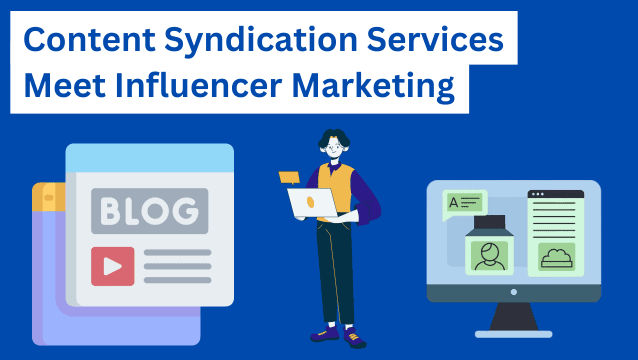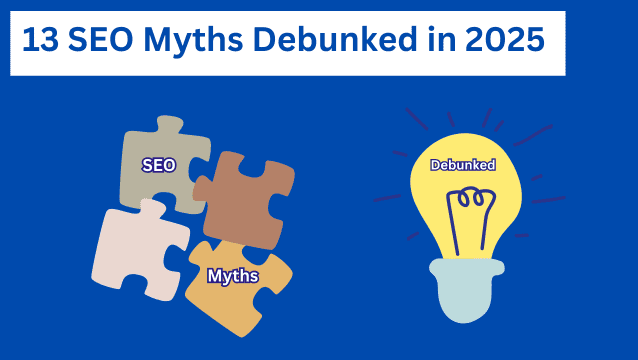SEO algorithms are changing like they never have. To stay ahead of Google’s algorithms, you must be vigilant, adaptable, and use a new playbook.
The stakes are high. AI is shaping search rankings. Users help decide where they point.
Since 90% of users choose Google as their preferred search engine, it affects the whole internet (Source: Statista).
To survive in a constantly transforming online environment in 2025, you need to cover the following SEO checklists.
What is SEO, and why does it matter?
SEO will help your website reach a significant score in search engine results by improving its organic traffic and visibility.
This process is not just about keywords and backlinks. It’s about providing value to users. Most importantly, it’s about matching search engines’ goal: delivering the best results.
$82.3 billion was the Global SEO Market in 2023 and will pass $143 billion by 2030.
It relates to search engine ranking on search engine results pages (SERPs).
Businesses often use strong processes to increase website traffic, conversion, and customer engagement. But if you miss it, your content will drown in the static of all your competitors.
Why does Google update its algorithms?
Google’s search algorithms provide the best results. Key drivers for updates are:
User behavior
Google started adjusting its algorithm as search switches to voice and mobile. For instance, the widespread use of voice assistants like Alexa increased the focus on conversational keywords.
Content quality
Google prefers high-quality and, more importantly, authoritative articles. Blogs, articles, and web pages must show E-A-T: expertise, authority, and trustworthiness. Poorly researched or misleading content can hurt your ranking. So can content that doesn’t add value to readers.
Combating spam
Google is constantly cracking down on spammy (i.e., black hat SEO) tactics like keyword stuffing, link farming, and cloaking. In 2025, the focus will shift toward user experience and genuine content. Businesses should not rely on shortcuts but invest in essential and valuable strategies to serve their audience.
Updates in key algorithms in 2023 and 2024
Staying informed on recent updates is essential to future-proof your algorithm optimization strategy. Here’s a recap of significant changes:
Helpful content system expansion
The update said it will reward people, not search engines. Websites with AI-generated or thin content dropped in rankings. Now, user-centric content is more important than ever.
Mobile experience boost
Mobile-first indexing is now a must. Sites with fast load times and intuitive mobile navigation rank better. More than half of visitors will leave a website if the load time is more than three seconds. A seamless mobile UX isn’t just nice to have—it’s essential.
Core Web Vitals update
Google increased page experience signals. It focused on load time, interactivity, and visual stability. Slow-loading pages and those with intrusive interstitials saw big ranking drops.
SEO and AI: The reason for concern in 2025
For SEO, artificial intelligence has become a double-edged sword. It streamlines content creation and personalization but also raises the bar for quality and relevance.
- AI-generated content: Tools like ChatGPT allow you to quickly write blogs and product descriptions. Google’s algorithms are good at discovering generic or low-quality AI content. To maintain credibility, businesses must focus on unique, insightful, and human-reviewed outputs.
- Search experience transformation: AI assistants like Bard and ChatGPT drive a revolution. Direct answers and personalized recommendations kill website traffic, so brands must rethink how to create value.
Companies offering mobile app development, like Android, can use AI. This helps create personalized user paths. They blend contextual data with engaging user interfaces to improve search relevance.
Pro Tip: Find an AI SEO agency as it can optimize your site for AEO.
How Core Web Vitals will affect rankings
Google’s Core Web Vitals are crucial. They focus on user experience metrics, like:
- Largest Contentful Paint (LCP): Measures loading speed.
- First Input Delay (FID): Assesses interactivity.
- Cumulative Layout Shift (CLS): Evaluates visual stability.
How to improve these metrics
- Compress media files: You can use tools like Tinypng to compress images.
- Enable lazy loading: Load non-critical elements with a delay.
- Leverage browser caching: Stylish source maps link keys to related static assets. They must be flexible enough.
Example:
E-commerce platforms must optimize Core Web Vitals, which affect user engagement and bounce rates. Shopify sites that focus on these metrics can help. They can provide faster, more stable experiences for businesses and users.
Screenshot provided by the author
Voice search optimization strategies
Voice search is as accurate as it gets right now. By 2025, people will search online using voice assistants, including Alexa, Siri, and Google Assistant.
How to optimize
- Focus on long-tail keywords: Use conversational phrases and question-based queries. For instance, “Where can I find Magento developers near me?”
- Use Schema markup: Structured data rises as search engines better understand content. This, in turn, boosts visibility in voice search results.
- Build FAQ pages: Answer people’s most common questions, even in the context of a voice search.
Example: Let’s say a New York café has optimized its website with a structured FAQ. Questions include “Will the food be hot?” and “Do you charge for ceramic dishes with drop-off deliveries?”
Their site used long-tail keywords and Schema markup. It then showed up in Google Assistant’s voice search for coffee nearby. As a result, the café saw a 30% increase in foot traffic from voice search users.
Video SEO for improving engagement
According to Forbes, video applications are responsible for 39% of global fixed download traffic in 2024. Few will see your content if you don’t rank high in videos. YouTube, Instagram, and TikTok take up most users’ attention.
Best practices
- Optimize titles and descriptions: Use keywords to describe your video content.
- Transcripts and closed captions: They make accessibility and keyword searching easier.
- Create engaging thumbnails: Visually stunning content increases click-through rates.
Backlinko’s YouTube strategy is a fantastic example of video optimization success. Brian Dean optimized his video titles with keywords, wrote detailed descriptions including timestamps, and added closed captions for accessibility. His YouTube videos usually rank high and get thousands of organic views each month.
Navigating Google penalties
Keep in mind that Google can impose penalties for even small mistakes. Make sure you’re following Google’s Webmaster Guidelines carefully. Doing so will help you maintain a good standing with search engines.
Common mistakes
Google might penalize you for:
- Keyword stuffing: Using repetitive keywords on one page lowers your content quality.
- Unnatural links: Do not use link schemes or low-quality backlinks.
- Duplicate content: Ensure originality, or the system will flag you.
How to recover
How do I recover from Google penalties? Here’s how:
- Conduct an audit: Semrush or Ahrefs come in handy when identifying penalized pages.
- Disavow toxic links: Google Search Console then submits a disavow file.
- Rebuild authority: Write high-quality, user-focused content often.
The analysis of user intent and search behaviour
Google focuses more on matching search results to user intent. Knowing and anticipating this intent increases rankings and lowers drop-off.
Types of user intent
You must think from the user’s perspective to achieve a good SEO rank. Some people use search engines because they’re looking for answers (like ‘how to use Ahrefs for SEO‘), while others want to make a purchase or compare products.
Google’s algorithm prioritizes content that aligns with these intents, making it crucial to tailor your strategy accordingly. The user interface types are as follows.
- Informational: Users wanting to find out (e.g., “How to do Yoga?”)
- Navigational: When users search for a term like “Shopify website login”
- Transactional: They are the people who want to make a purchase, like “Buy Android app from Google Play Store”
- Commercial: Researching about products and services, such as “What should I choose, Netflix or Amazon Prime?”
Optimization tips
To improve search visibility, align your content with user intent. So, it must be structured strategically. Here are two key techniques to optimize your content. They ensure it meets users’ needs at every stage of their journey:
- Content mapping: Make your content fit correctly at each user journey stage.
- Answer questions: Use headings and subheadings to answer common search queries.
Emerging technologies in SEO
New engagement opportunities and tech like AR, VR, and blockchain are shaping this practice.
Examples
- Augmented Reality (AR): Retailers can use virtual try-ons with AR. This helps them improve content for AR-specific searches.
- Blockchain: A blockchain will verify and make ad spending transparent. This will boost trust and credibility.
Industries impacted
Fashion, real estate, and gaming businesses are leading in AR and VR. They drive traffic and enhance the user experience.
Future-proofing your strategy
SEO is an evolving field, so watch your business by updating and innovating.
Steps to future-proof
- Invest in training: Prepare your team to stay up-to-date.
- Stay agile: Try new content formats and technologies out all the time.
- Monitor trends: Google Alerts or Feedly are tools you can use to share updates.
By matching the strategy to the trend, the businesses can sustain their rankings and expand their digital footprint.
In addition to staying agile and continuously upskilling your team, strong succession planning helps future-proof the business by ensuring that key roles have capable, prepared successors who can maintain momentum as trends and technologies evolve.
The importance of SEO for e-commerce platforms
SEO helps e-commerce sites stay visible and attract customers, even when other platforms lose traffic or shut down.
Businesses often hire specialized Shopify SEO services to optimize their online stores’ search engine performance and maintain strong visibility in competitive niches.
A top Shopify website development services provider can help if your online store is on Shopify.
They can improve it by speeding up load times, enhancing product descriptions, and optimizing metadata for search engines. These efforts will change how search results rank and enhance shopping.
Solution for all industries
There is not one approach across all industries. To rank higher for specific searches, online stores must: optimize product pages, update metadata, and use schema markup.
A Magento development company can help create strategies. They can boost organic traffic, visibility, and conversions in a crowded e-commerce market.
Like ASO for mobile apps, an Android app development services provider can use targeted keywords and user behaviour analysis to rank higher in the Google Play Store.
Using it for app discoverability can boost downloads and engagement.
SEO checklist 2025: tactics and best practices
For those who expect to increase their website visibility on search engines (marketers, business owners, and content writers), an SEO checklist is a kind of practical example. They can use it while launching a new website or modifying an existing one. Using the SEO checklist will allow for improved content ranking, increased traffic, and connecting with the right audience.
1. Content optimization
Content marketing and SEO work together to drive organic traffic to your website. Without a doubt, content and SEO are two sides of the same coin. Here’s what you should focus on:
- E-A-T principles: Create content that proves you are an expert and a trusted authority. Show you are worth following.
- Refreshing old content: Update your old posts with current data to keep them relevant. Also, add keywords. Check analytics regularly. Find and refresh any pages that underperform.
2. Technical SEO
A solid technical base helps search engines crawl and index your site well.
- Core Web Vitals: Rather, prioritise load time, interactivity, and visual stability improvement. Compress images, enable browser caching, and use a CDN to speed up your site. Google Web Vitals can get you the stats of a page you’re looking for.
- Mobile optimization: Make your site fully responsive and easily used on mobile devices. A mobile-friendly design is now a baseline requirement, not an option.
- Schema markup: Use structured data on your site. Rich results, such as FAQs, recipes, and products, help showcase your site.
3. AI-driven enhancements
AI can amplify your optimization efforts when you use it with a clear strategy.
- Content insights: AI tools can help you find gaps in your content strategy. They can also show you trending topics. For instance, sites like Surfer can suggest keyword clusters. They can help you optimize one or more existing pages.
- Human oversight: AI can do some things for you. But no AI can replace human editors. They will get the correct final output for your audience, with a unique tone.
4. Local SEO
Localized searches continue to gain momentum, especially for businesses targeting specific regions:
- Google business profiles must show your contact info, hours, and services. They must be accurate for all to see. Upload high-quality images and answer customer queries as immediately as possible.
- Customer reviews: Make screenshots and mail easier. Encourage happy clients to leave reviews. This will increase your credibility and local rankings.
5. Link building
Building a strong backlink profile remains critical:
- Quality over quantity: Regarding backlinks, it’s not about how many you have—it’s about where they come from. Focus on earning links from trustworthy, niche-relevant sites. A few solid backlinks from the right places can do more for your SEO than a flood of low-quality ones. Think of it like building authentic relationships—guest posts, collaborations, and strategic partnerships can all go a long way.
- Avoid black hat tactics: Don’t use paid links or link farms. Google’s algorithms are quickly catching up and starting to penalize these.
6. Emerging trends
Emerging technologies are increasingly influencing SEO:
- Voice search optimization: Create content to answer conversational or question-based queries. For example, target detailed FAQ sections. They may answer, “What is the best Shopify website development service?”
- AI-driven search: AI tools like Bard and ChatGPT are changing how people search online. So, optimize for featured snippets and rich results, too. You don’t want to go offline again.
7. Ethical considerations
Ethical practices are growing in importance as search engines evolve. Ethics will always triumph over unethical practices. Manipulative tactics may yield short-term gains, but they usually cause long-term harm.
Best practices:
- Transparency: Let people know if you’re writing sponsored content or affiliate links.
- Authenticity: Be authentic. Don’t game the algorithms. Focus on making users happy.
8. Content distribution and promotion technology
The first half of the battle is creating content. When you promote it well, you get maximum reach and ROI.
Here are some strategies for content distribution:
- Social media content: Share posts on LinkedIn, Twitter, and Instagram.
- Email marketing campaigns: Target new content with newsletters and drive traffic.
- Collaborations and guest posts: An influencer or industry leader can be a partner to go further. Influencers can share their experience after using your products or services, building more trust with their followers (and so you’ll get more traffic).
To effectively promote a blog like “Best Shopify Website Development Tips,” customise your content to fit each social media platform:
- LinkedIn: Share high-quality professional content—think articles, infographics, and carousel posts. LinkedIn users value actionable advice and industry insights. For example, you could write a LinkedIn article highlighting key takeaways from a blog post and including a link to your site for deeper reading.
- X (Formerly Twitter): Keep it short, sharp, and engaging. Use threads to break down key points from your blog, share interesting stats, or offer quick tips. It’s perfect for bite-sized content that sparks curiosity. Start with a strong hook, include relevant hashtags, and link back to your whole post for those who want more.
- Instagram: Instagram offers a great opportunity to focus on Reels and Stories. Visually engaging content has the reach here. For example, make reels with quick design tips or use stories to tease blogs.
Each platform has its advantages and affords different opportunities to connect with your audience. Being visually engaging is one of the best ways to stimulate the interest and engagement you’re looking for!
Conclusion
To stay relevant in the changing world, businesses must adapt. However, organizations can focus more on users and stay up-to-date with technology and search algorithm updates.
What matters most is high-quality content and strong technical SEO practices. These will give you higher rankings and pressure-test your content to increase user trust in the brand you’re building.
You must define the industry’s expectations for digital presence and innovation. After all, could you not lead the trend?
Want to learn how to take your SEO strategy to the next level? Please book a consultation with us today, and get ready to see real results!


